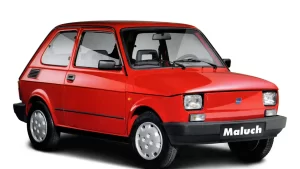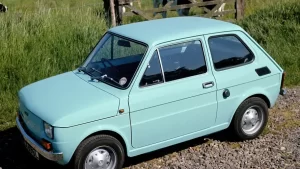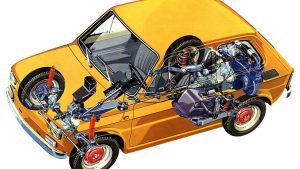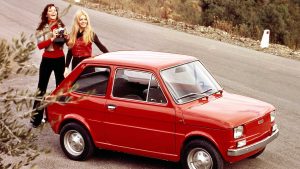 A family car with over 3.3 million sold.
A family car with over 3.3 million sold.
The Polski Fiat 126, a cute city car produced under license agreement between Poland (Polski) and Fiat (Italian). It was a small family car despite its size.
When and where was it made?
The Polski Fiat 126p was a much more popular model than its predecessor, the Fiat 126. FSM, Fiat Auto Poland and Fiat Auto Poland produced 3,318,674 examples between 1973 and 2000. In contrast, Fiat produced 1,352,912 cars in Italy from 1972 through 1980.
Technical details:
The 126p came with a straighttwin petrol engine. It was available in three displacements: 594 cubic centimeters (652 cc), and 704 cm (704 cc). The first two produced 23 horsepower (17 kilowatts), while the largest one produced 26 horsepower (19 kW).
The mini car has seen many technological improvements over the years. These include upgraded brakes and hazard blinkers, reverse lights and tail fog, as well as an electronic ignition system.
What makes it so special?
The 126p is a small car that has a huge meaning for the Polish people. It was the first affordable, highly-popular vehicle in the country and is arguably the most loved car in the 1980s. It was also well-known in Hungary. The vehicle was exported briefly to Australia in the late 1980s.
While “the bigger, better” is a popular phrase in today’s car world, it was a completely different situation 30-40 years ago. It was 120.2-inch (3.05 m) long and 126p could carry four people. However, it was primarily used as a family car, as I mentioned. It was referred to as “maluch”, which was a nickname for the small car by drivers. In 1997, the automaker accepted this name for the vehicle.
It’s amazing how simple it is to build a car. A steering wheel, handbrake and four seats are all you need. Customers were happy to pay 126p for this, because it was affordable and easy-to-maintain. The 126p had its problems, including the battery being too small and not being fully charged by the generator.
After a remarkable run exceeding 3.3 million units, production of the 126p was stopped on 22 September 2000. Happy End was the swan song for the cute car. It featured 500 yellow and 500 blue cars with plastic bumpers and new dashboards. This series was part of major facelifts that took place between 1987 and 1994. We forgot to mention that the original 2-cylinder engine was air-cooled. Super (air-cool!)


